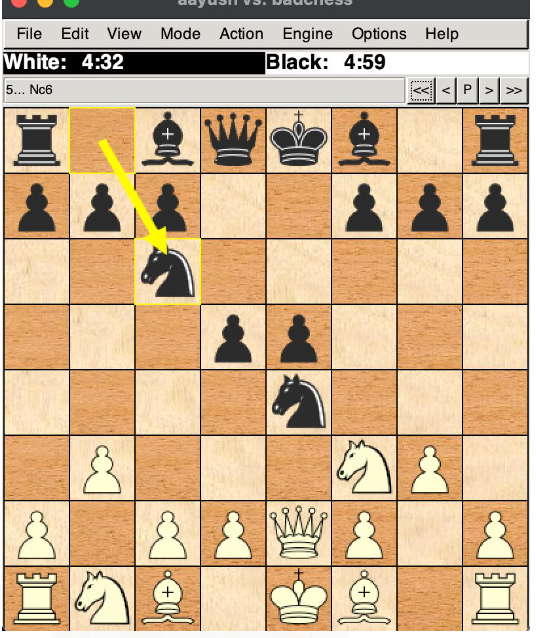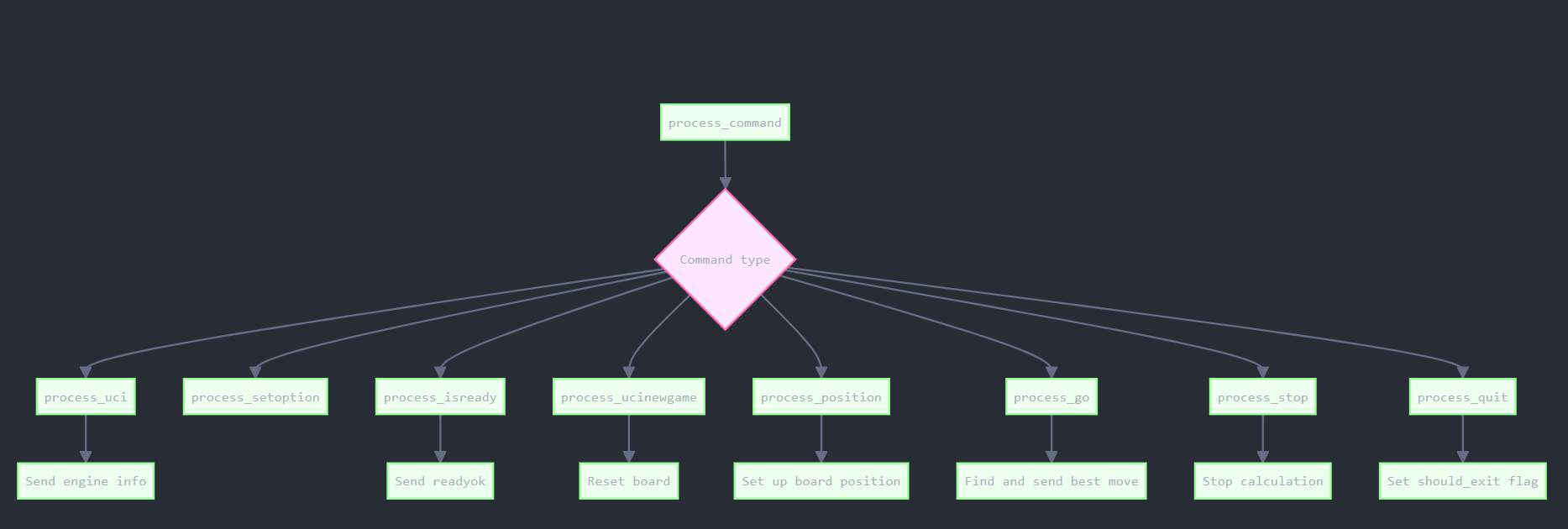Chessify:(InnovateX hackathon) Decoding the Anatomy of an Advanced UCI Chess Engine
 AVINAV KASHYAP
AVINAV KASHYAP
In this blog post, we'll dive into the architecture of Chessify, an advanced chess engine that implements the Universal Chess Interface (UCI) protocol. We'll explore its main components, multithreading approach, UCI protocol handling, and the core chess logic. Let's break it down step by step.
The main setup involves:
Setting stdin to non-blocking mode, allowing asynchronous input processing.
Initializing a queue for inter-thread communication.
Creating a chess board object to represent the game state.
Setting up a ThreadPoolExecutor to manage multiple threads.
Starting the producer and consumer threads.
This setup lays the foundation for the engine's multithreaded operation and UCI protocol handling.

2. Multithreading:-
Our chess engine uses a producer-consumer pattern for handling input and processing commands. Here's how it works:

The multithreading setup consists of:
A producer thread that reads input from stdin and puts commands into a shared queue.
Multiple consumer threads that process commands from the queue.
A shared queue that facilitates communication between the producer and consumers.
This approach allows the engine to handle input and process commands concurrently, improving responsiveness and efficiency.
3. UCI Protocol Handling
The Universal Chess Interface (UCI) protocol is a way for chess engines to communicate with user interfaces. Our engine implements various UCI commands:

The UCI protocol handling includes:
Processing different types of UCI commands (uci, isready, position, go, etc.).
Updating the internal board state based on received commands.
Initiating move calculation when requested.
Sending appropriate responses back to the GUI.
This component acts as the interface between the chess GUI and the engine's internal logic.
4. Chess Logic:-
The core of our chess engine is the chess logic, which is responsible for finding the best move in a given position:

The chess logic consists of:
An alpha-beta search algorithm to efficiently explore the game tree.
Max and min value functions that recursively evaluate positions.
A move ordering function to optimize search efficiency.
Board evaluation functions that assess material balance and piece positioning.
This component is the "brain" of the chess engine, determining the best moves based on the current board position.
Conclusion:-
Our UCI-compatible chess engine is a complex system with several interacting components:
A main setup that initializes the environment.
A multithreading system for efficient command processing.
A UCI protocol handler for communicating with chess GUIs.
Core chess logic for move selection and evaluation.
Each of these components plays a crucial role in the engine's functionality. The multithreaded design allows for responsive input handling, while the UCI protocol ensures compatibility with various chess interfaces. The chess logic, with its alpha-beta search and evaluation functions, forms the strategic core of the engine.
This architecture provides a solid foundation for a functional chess engine, with room for further optimizations and enhancements in areas such as opening books, endgame tablebases, and more sophisticated evaluation functions.

Thank you for your time .HAPPY playing CHESS!

Subscribe to my newsletter
Read articles from AVINAV KASHYAP directly inside your inbox. Subscribe to the newsletter, and don't miss out.
Written by

AVINAV KASHYAP
AVINAV KASHYAP
I am a student with a keen interest in learning technology. I love technology and is someone who believes on "LEARN BY DOING" principle.